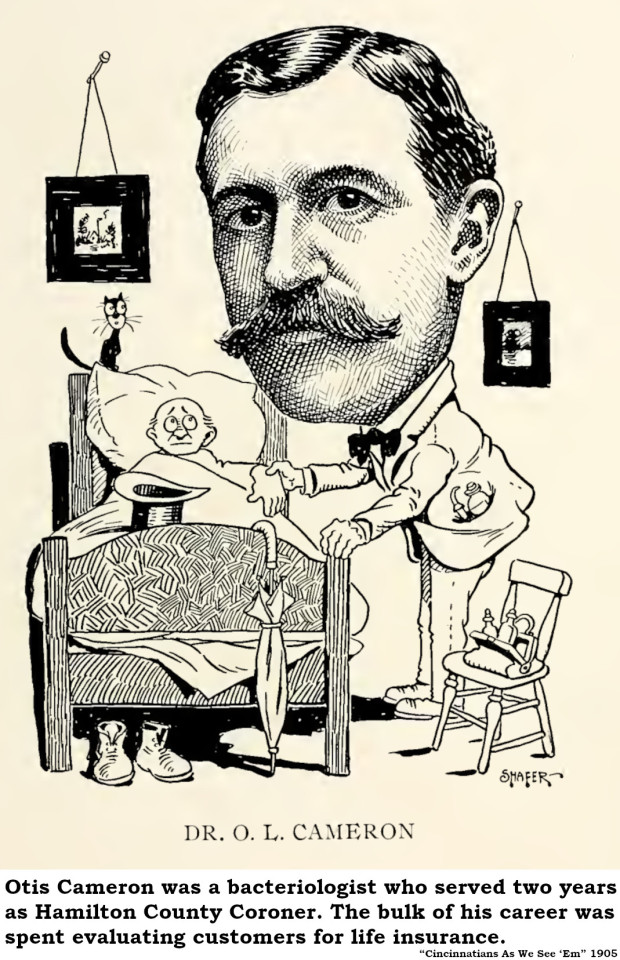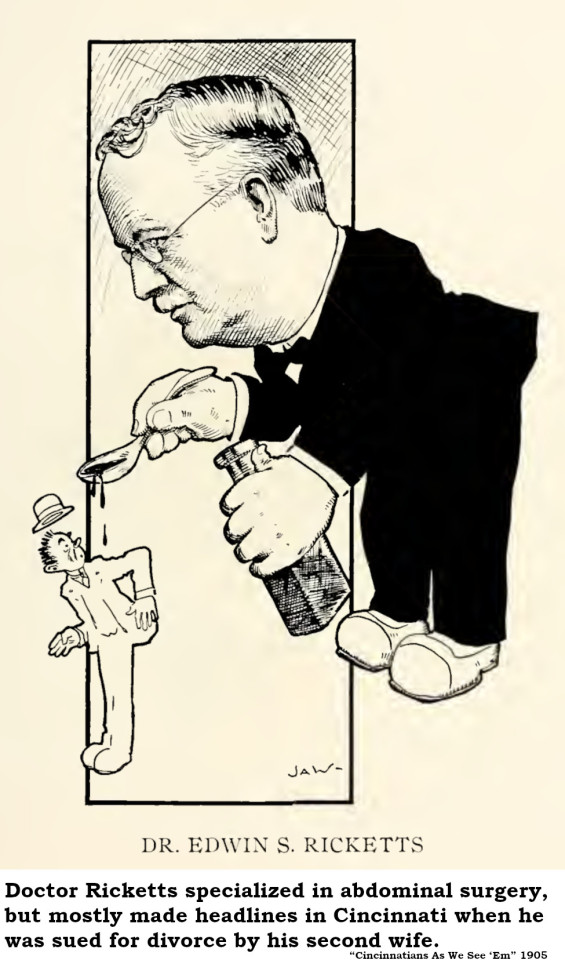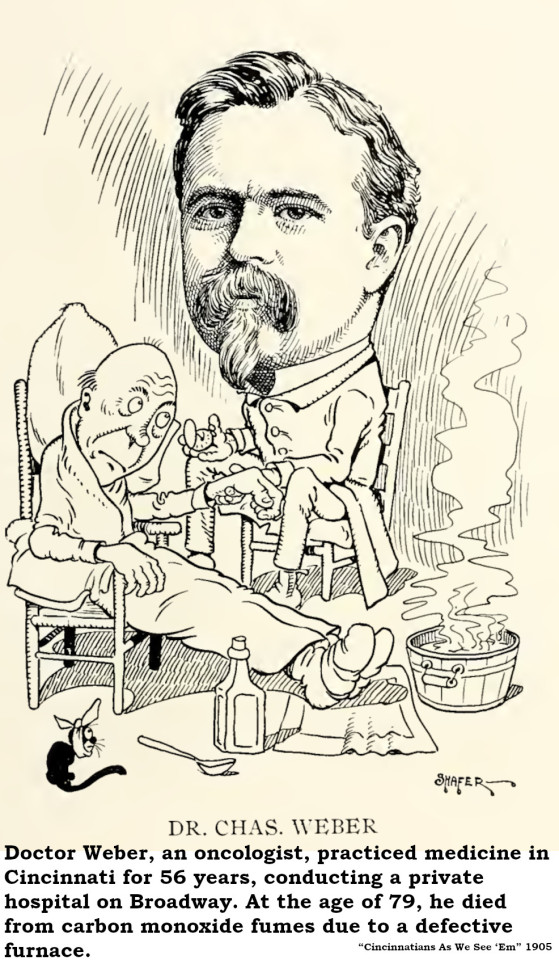#cincinnati doctors
Text
From Grocer’s Itch To Milk Leg: Here Are 17 Antique Diseases That Once Tormented Cincinnatians
If you practiced medicine in Cincinnati during the 1800s, you encountered some nasty and mostly fatal germs like typhus, diphtheria, smallpox, and dysentery. In the age before antibiotics, your therapeutic options might involve anything from leeches to opium to a big dose of hope. Cincinnatians endured many diseases we don’t hear about anymore. Here are a few of them.
Black Water Fever
For a good portion of its first century, Cincinnati saw regular infestations of malaria, usually identified then as “bilious fever.” In extreme cases, malaria transformed into the usually fatal Black Water Fever, characterized by extremely dark urine caused by red blood cells bursting and releasing a flood of hemoglobin. It was just as nasty as it sounds.
Bronze John
Cincinnati was largely built on commercial relations with the American South and consequently we adopted a lot of Southern terms. One was “Bronze John” as a name for Yellow Fever. That term seems to have originated in Memphis. Cincinnati newspapers watched Memphis intently. If “Bronze John” appeared in Memphis, it was almost certain that Yellow Fever would erupt in Cincinnati.

Catarrh
A multitude of ailments, from the common cold to asthma and hay fever were lumped together under the name Catarrh. Almost any condition that involved a stuffy nose or chest congestion got diagnosed as such. Amazingly, the most commonly prescribed treatments for Catarrh involved smoking aromatic herbs or grinding such spicy plants into powder and inhaling them as snuff.
Chin Cough
Today, we call it whooping cough or pertussis. We vaccinate children so they don’t get it. Back in the day, it was sometimes called “Chin Cough” and was among the maladies certain to be banished with a dose of the patent medicines promoted by fly-by-night hucksters passing through town. An 1822 editorial in the Cincinnati Gazette so enthusiastically supported universal cowpox vaccination that the writer claimed it not only prevented smallpox but “effectively cured scrofulous swellings [inflamed lymph nodes], ophthalmia [conjunctivitis] and chin-cough.”
Collywobbles
Although this is the name of a real disease, namely a nervous or upset stomach, hardly anyone ever used the word in a serious situation. Adults suffered from dyspepsia. Greedy little kids who ate too much candy got the collywobbles. The term was also used humorously in political commentary to satirize politicians who feigned distress on learning about the machinations of their opponents.
Cooties
It was a schoolyard taunt for those of a certain generation: “Stay away from girls because they’ve got Cooties.” Or it was a game – still manufactured by Hasbro. Long ago, Cooties were no laughing matter; it was a nickname for lice. Although lice infestations were not rare in Cincinnati, “Cooties” usually referred to lice endured by soldiers in various wars, especially World War I.
Dandy Fever
Today, we think of Dengue Fever as a tropical inconvenience, but it was once fairly common in Cincinnati, generating a number of nicknames including “Bucket Fever,” “Broken Bone Fever” and “Dandy Fever.” The tendency of this mosquito-borne disease to cause severe joint pain led sufferers to adopt a very stiff-jointed mode of walking in which they appeared to imitate the gait of a dandy.

Dry Bellyache
Sometimes known as “Painter’s Colic,” the disease called Dry Bellyache is essentially lead poisoning. It is one of the symptoms of exposure to heavy metals such as lead. Some of the first described cases were traced to consumption of cheap rum, which accumulated a hefty dose of lead from the solder holding distillation coils together.
Grippe
Usually referred to as “The Grippe” or “La Grippe,” influenza was a dangerous infection then and now. The term comes from the French word for influenza, hence the “La.” In an attempt to Anglicize the French term, some newspapers used “The Grip.” Death resulted so often from The Grippe that newspapers alerted travelers to avoid cities in which it was rampant. The Cincinnati Gazette of 18 April 1837 carried the news, for example, that The Grippe was raging in Constantinople.
Grocer’s Itch
In the days before packaged goods, grocers sold a lot of bulk staples such as flour, lard and sugar. An occupational condition known as Grocer’s Itch was common among Cincinnati’s shopkeepers and was caused by a type of mite, Acarus sacchari, known as the “sugar insect” although it was not an insect; mites have eight legs. Anyone devoting any amount of time to measuring raw sugar was likely to see their arms and hands infested with mite bites.
Jail Fever
When sanitary conditions in Cincinnati’s finest homes were iffy at best, the city’s prisons were positively deplorable. Among other diseases, typhus was endemic and so common among prisoners that it gained the nickname “Jail Fever.” The Cincinnati Gazette [25 January 1876] emphasized just how serious the situation was: “A case was mentioned of a jail prisoner who was brought into court to receive his sentence while suffering with typhus fever, and within one week every member of the Court, judge, jurors, Sheriffs and all were dead.”
Milk Leg
The Cincinnati Semi-Weekly Gazette of 14 October 1873 carried a letter promising quick relief from Milk Leg. The remedy, involving chamber lye and boiled mullein leaves, appears to be more trouble than it was worth, but the correspondent claimed it cured her after she “had lain from in December till the next corn planting.” Today, we would call Milk Leg phlebitis, a condition in which the veins of the leg become inflamed.
Salt Rheum
If you were afflicted by Salt Rheum in 1853, an advertisement in the Cincinnati Enquirer offered sure relief: “Salt Rheum, (or Tetter), Scald Head and Ring Worms positively cured in every ninety-seven cases in a hundred, by the use of Gridley’s Salt Rheum Ointment, which is justly ranked by the most learned physicians as one of the most important discoveries of the nineteenth century.” Salt Rheum, Tetter and Scald Head were all various forms of skin disease including eczema, psoriasis, and some forms of herpes. Another dermatological affliction, involving small whitish patches of itchy skin caused by cold weather was known as Chilblains.
Scorbutic Fever
Almost unheard of today, except among adherents of extreme diets, scurvy is a debilitating disease caused by a shortage of Vitamin C. In extreme cases, scurvy could produce elevated body temperatures variously known as Scorbutic Fever or “Camp Fever.” The “camp” in question was not a vacation getaway but a prison camp and reflected the abysmal food provided to the inmates.
Scrivener’s Palsy
There are not many scriveners employed these days, so think of poor Bob Cratchit in Charles Dickens’ “A Christmas Carol.” Hunched over a poorly lit desk, scribbling away all day was bound to have an effect, and so it did, in an affliction that we might call “Writer’s Cramp” today, if there were any writers who still used a pencil and paper. The Cincinnati Gazette of 8 July 1875 reported the emergence of a similar affliction, “Telegrapher’s Palsy.” Also caused by clerical work was “Typewriter’s Disease,” but this was a mental condition in which over-concentration on transcribing verbiage led to a sort of psychosomatic blindness in which the victim was unable to read at all.
Scrumpox
The malady known as Scrumpox is still around today but, since its cause is now known, it goes by a different name – Herpes Gladiatorum. As the older name implies, it is a skin condition, a form of herpes, passed along by athletes rubbing exposed skin together, as in a rugby scrum. In fact, the first attempt at a scientific name for the disease was Herpes Rugbiorum. It also shows up as “Wrestler’s Herpes.” The Enquirer of 12 April 1896 listed scrumpox among some other athletic disorders including “Golf Arm” and “Cyclist’s Back.”
Sinking Chills
The Cincinnati Gazette of 30 April 1874 reported: “Andrew Palmer, a pioneer citizen of Butler Township, died yesterday, of sinking chills, aged 70 years.” Mr. Palmer may have been the victim of any number of pernicious or intermittent fevers, the most common of which were a symptom of malaria. Sinking Chills also described a sort of general malaise targeted by a lot of the spring tonics and nostrums concocted by the patent medicine industry. Another antique term for malarial fevers was Ague, usually called The Ague.

10 notes
·
View notes